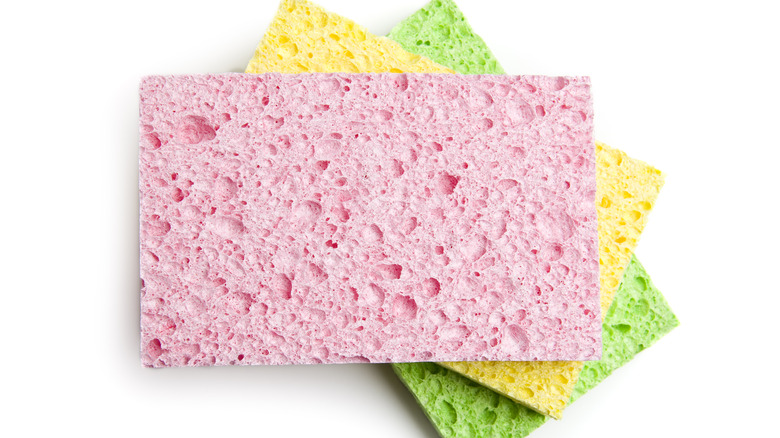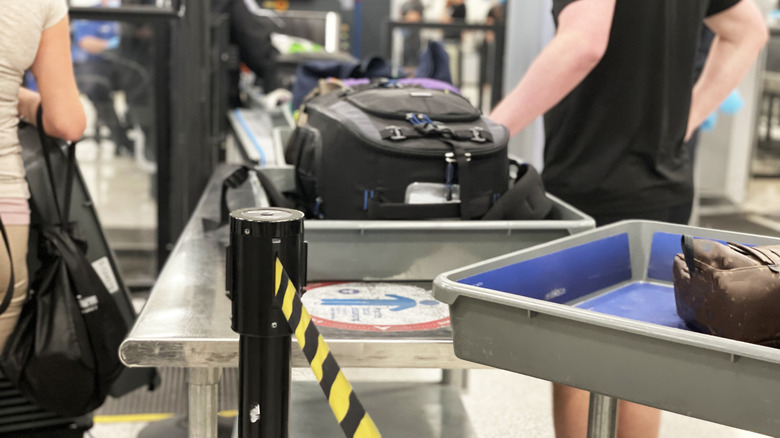Keep Your Snacks Cold While Traveling By Reusing This Kitchen Staple
You're at a hotel at the end of a lovely vacation. You swam, you explored, you met new people, and you ate some delicious food. Food. That's the issue you have to tackle. Even though you spent less on food than you expected, you still ended up with snacks and leftovers sitting in the fridge. You want to keep them cold and fresh, but you also have a flight to catch tomorrow and a TSA line to go through. Your food and your time are in competition with one another. You're unwilling to let go of the food, but you don't want bacteria to win — what do you do?
We have a solution for you that's cheap and effective. If you have time to pick up some sponges and let them freeze, then you can keep your food cold without running the risk of your food becoming infected with bacteria that could possibly make you sick.
Keeping it cool with sponges
Using frozen sponges is a great way to keep your food cold. The amount of food that you have will determine the amount of sponges you'll need. This method works best for snacks because they're smaller than full meals. After you have your sponges, you can drench them in water and throw them in the freezer until they're frozen solid. If you're in a bit of a time crunch, you can sprinkle some salt on them to make them freeze faster.
Once frozen, you can grab a Ziploc bag and place the sponges inside, along with any snacks that you have. If you have food in a container, your best bet is to place the sponge in the Ziploc bag and then place it directly in the container. If you're not a fan of this, you can take a couple of sponges and put them in the same bag as the container of food.
You shouldn't have any issues getting through TSA, since the sponges are frozen solid. Your food will stay cold for a couple of hours with this method.
Alternatives to sponges
To keep your food cold for longer, consider freezing the food itself before adding the sponges. Obviously, this doesn't work for all foods (freezing a salad can make the texture gross when thawed, for example), but for those that it does work with, it can be a lifesaver.
You can also swap sponges for insulation. To do this, you can use paper towels wrapped around the frozen food, and then place them both in a Ziploc bag. Alternatively, you can wrap your frozen food in aluminum foil, and then for extra insulation, wrap the entire thing in a small towel. If DIY isn't for you, you can always invest in thermal bags.
You can bring food through TSA, so you should be able to get through security effortlessly with each of these methods — just make sure you take the food out of your bag and place it directly in a bin. If your food is buried in your bag, the TSA machines sometimes can't recognize it, and the officers need to investigate. If this happens, there's no need to worry. Once they see it's food, you're usually good to go. Whatever method you decide on, you'll be able to keep your food cold while traveling in an inexpensive, quick, and easy way.


